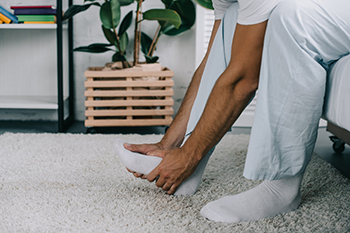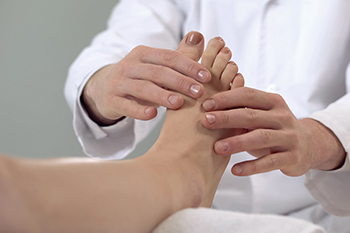
The three main causes of swollen ankles, known as edema, are said to be pregnancy, heart disease, and overuse. These can result due to the body holding on to too much fluid, which eventually settles in the ankles and feet. Symptoms associated with edema include pain, shoes that feel too tight, and trouble walking. In addition, one might experience shortness of breath and an inability to exercise. Edema generally coincides with an underlying condition like fluid imbalance, injury, or inflammation. Other causes include walking or exercising too frequently, or on the contrary, sitting in one place for too long. Pregnancy, autoimmune problems, and blood clots may also cause edema. Medical conditions like poor circulation, heart disease, and kidney disease can contribute to swelling as well. If the swelling in your ankles has become chronic, it is suggested that you visit a chiropodist who can perform tests to identify the cause and suggest appropriate treatment plans.
Ankle pain is a common symptom of many lower limb problems. If you are experiencing ankle pain, please consult with one of the specialists from Thornhill Foot Clinic. Our chiropodists will assess your condition and provide you with quality foot and ankle treatment.
The ankle is composed of a number of muscles, bones, tendons, and ligaments. There are many conditions which may cause ankle pain.
Causes
Ankle strains or sprains
Achilles tendon injuries
Fractures
Bursitis
Arthritis
Gout
Tarsal tunnel syndrome
Symptoms
If you have ankle pain, you may also experience a variety of other symptoms depending on the underlying cause of the pain. Some of these symptoms may include ankle swelling, bruising, redness, numbness or tingling, instability, and difficulty walking.
Diagnosis
The underlying cause of ankle pain can be diagnosed by a chiropodist. Diagnoses are typically made based on your medical history, a physical examination of the affected ankle, and imaging studies such as X-rays.
Treatment
Treatment for your ankle pain will depend on its underlying cause. Often, the chiropodist will recommend that you rest the affected ankle. You might also need to ice, compress, and elevate the ankle, wear an orthotic device, or take medications to reduce pain and inflammation.
If you have any questions, please feel free to contact our office located in . We offer the newest diagnostic and treatment technologies for all your foot care needs.
 Foot pain
Foot pain


